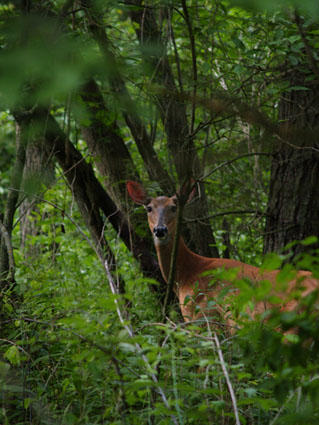 Hunting doe bedding areas has delivered more rutting bucks for me than all other stand placement strategies combined. I find it to be a deadly tactic. The following guidelines help tremendously.
Hunting doe bedding areas has delivered more rutting bucks for me than all other stand placement strategies combined. I find it to be a deadly tactic. The following guidelines help tremendously.
* Not all doe bedding areas can be hunted effectively. For example, bedding areas based on topography, such as ridges and points, often don’t allow hunters to slip in without being seen. Furthermore, the lack of at least one defined edge makes it very hit-or-miss, unless paired with some form of a pinch point.
* The easiest doe bedding areas to hunt are those with a defined edge, such as a cedar swamp, thicket or overgrown CRP field. Here bucks can skirt the edge, scent-checking both the trails and does inside. This allows them to swiftly and effectively scent-check entire doe groups.
* When all else is equal, hunt the downwind side of the bedding area. Because a buck can scent-check all the occupants with one downwind pass, this is the route he takes most often.
* Most times, bucks cruise the edge of the bedding area between five to 20 yards off its edge. Therefore, stands placed approximately 30 yards out keep most bucks upwind of the stand and also provide shots at those cruising as far out as 60 or more yards.
* Finally, when selecting a tree on the prevailing downwind side, look to cover either the best entrance/exit trail, a well-used pinch or the most impressive scrape in the area. Follow these guidelines and you’re well on your way to filling that tag with a rutting buck.






